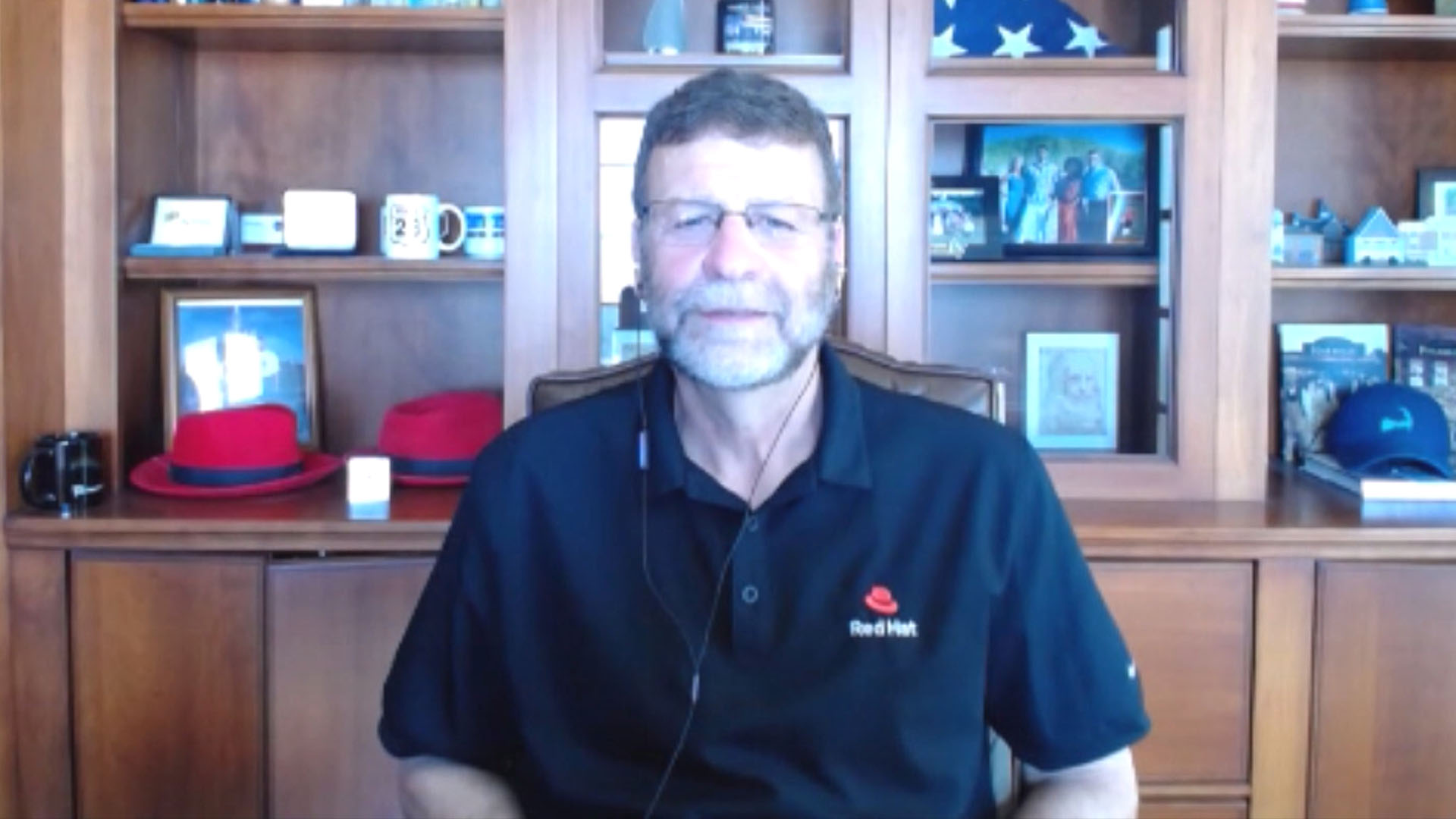 CLOUD
CLOUD
 CLOUD
CLOUD
 CLOUD
CLOUD
When applications lead, they ask a lot of supporting technology and the people managing it. They come in all shapes and sizes; what’s good for the interactive mobile app might not be good for the multifactor-authentication page.
That’s why companies are demanding hybrid environments — to run their full array of apps optimally. Open-source communities are giving them the innovative software they ask for at a rapid pace. But with many lacking the skills to use it, how will they take advantage of it?
“Every CIO now needs to be a cloud operator,” said Paul Cormier (pictured), president and chief executive officer of Red Hat Inc.
Red Hat’s research reveals that companies commonly have six clouds and look to run in eight to 10 over the next three to five years, according to Cormier. Stitching them together and making decisions about where and how to run apps is changing the role of chief information officers and other information technology professionals.
“There wasn’t a single answer when it was all in one building or datacenter, but now it’s even more complex,” Cormier stated.
Cormier spoke with John Furrier, host of theCUBE, SiliconANGLE Media’s livestreaming studio, during Red Hat Summit. They discussed open-source innovation and Red Hat’s involvement in both hybrid software development and research initiatives. (* Disclosure below.)
A whole new discipline is developing around hybrid operations, and it’s going to take time and research to nail the best practices. For now, there are hybrid survival strategies for IT teams already deploying hybrid apps. Choosing a common underlying platform for all apps can make a hybrid environment more navigable, as can outsourcing hybrid-cloud tasks to managed-service providers, according to Cormier.
Not long ago, a software company may have taken five years to develop and bring to market major product changes. End-user participation upstream in open-source communities has radically shortened the change cycle.
“It cuts out years of time for that innovation to get from concept to building to productizing to production. That is one of the big reasons why we’re seeing innovation move like we’ve never seen it before in the enterprise,” Cormier explained.
For example, Red Hat, which contributes to open source and packages open-source software for enterprises, builds end-user requirements into future R&D and products. It already has hybrid customers using its products in production for internet of things edge deployments. “We weren’t even talking about that two years ago,” Cormier said.
Hybrid variety and customization gives companies a ton of power, but high-level hybrid skills are still scarce in the industry. Red Hat is remediating the skills shortage with tools that simplify hybrid. For example, its OpenShift container application platform with the Linux operating system underneath spans on-prem, cloud and edge footprints. Cormier also sees many companies adopting managed services for uptime guarantees and the skillsets of providers.
Hybrid-cloud complexity is “almost like systems engineering on steroids,” according to Cormier. For this reason, the Massachusetts Open Cloud initiative exists. Built on Red Hat’s OpenStack platform and Red Hat Ceph Storage, the project consists of a consortium of private and public institutions — including Harvard and Boston University — and is working to hone cloud and hybrid-cloud computing tools and methods.
Red Hat’s parent company, IBM, has also been doubling down on hybrid, which figured into its decision to acquire Red Hat in 2019.
“I think IBM, bringing us in, saw that hybrid was maybe as big, if not a bigger, opportunity than cloud itself because of … the power it’s going to bring, but also the complexity,” Cormier concluded.
Here’s the complete video interview, part of SiliconANGLE’s and theCUBE’s coverage of Red Hat Summit. (* Disclosure: TheCUBE is a paid media partner for Red Hat Summit. Neither Red Hat, the sponsor for theCUBE’s event coverage, nor other sponsors have editorial control over content on theCUBE or SiliconANGLE.)
THANK YOU